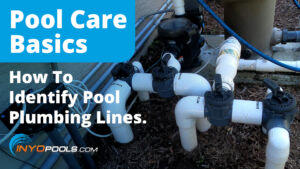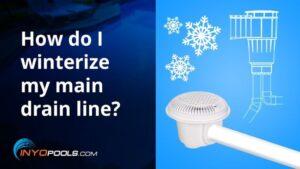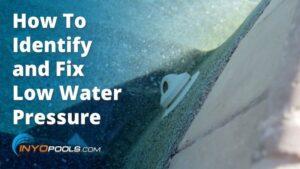The plumbing order of your pool equipment can sometimes seem arbitrary, especially if you have the pleasure of owning a PVC spider’s nest for an equipment pad. Though, for pool plumbing, every piece has its rightful place. Let’s dive into the correct configurations for common equipment pads.
The Base Package: Pump, Filter, & Chlorinator

The pump, filter, and chlorinator placement will stay the same in most pool configurations. Therefore, the pump and filter will be the first two pieces of equipment, with the chlorinator (or any other sanitation device) being the last unit before the water returns to the pool.
The pump, filter, and chlorinator are the stock setup for any pool; most other equipment will fall between the filter and the chlorinator.
Chlorinators (and alternative sanitizers) come last in the plumbing line because you want freshly dosed sanitized water to go directly into the pool to mingle with and clean the other water.
The plumbing order of your pool equipment can sometimes seem arbitrary, especially if you have the pleasure of owning a PVC spider’s nest for an equipment pad. Though, for pool plumbing, every piece has its rightful place. Let’s dive into the correct configurations for common equipment pads.
Heater Order



The three common types of pool heaters are solar, gas, and heat pump. If you plan on having more than one type of Pool Heater on your equipment pad, they should be ordered from the most to least energy efficient.
Cost Efficiency
- Solar Heater
- Heat Pump
- Gas Heater
The point of daisy-chaining is to maximize cost and operation efficiency by giving the most efficient Heater the first opportunity to heat the water to the desired temperature. This lessens the need to run the more costly equipment during stages of the season when you are trying to maintain heat rather than dramatically raise it. If the water still needs further heating after the first Heater, the subsequent units can turn on.
Rise in heat
- Gas Heater
- Heat Pump
- Solar Heater
A bypass should also be included in the plumbing of multiple heating elements to allow you to choose a preferred heater type or if you want to bypass the heaters altogether. To better, the unit’s longevity and flowwater’swe suggest installing a bypass so that the water does not have to flow through the Heater when it is not in operation.
Auxiliary Pumps

Secondary pumps responsible for providing water flow to a water feature or pool accessory can be plumbed in-line after the pump and filter and before the next piece of equipment or placed in their plumbing loop separate from the main system.
Pressure-side cleaners require a booster pump to provide water flow to the cleaner head. In that same vein, water features like waterfalls and laminar require certain levels of flow to operate, which your standard filter pump may not be able to produce.
Pools heated by solar panels often require an auxiliary pump to provide the extra boost to elevate water to roof-mounted panels or to overcome the extra head pressure the panels add to the system.
Secondary Plumbing Loops
Pump > Filter > Chlorinator with Aux Pump > Solar Heater
Suppose you want to avoid overtaxing your main pool equipment; you can also install a secondary plumbing line that uses an auxiliary pump to feed your solar panels, Heater, booster pump, waterfall, or in-floor cleaner.
A perk of this configuration is that you can operate the two plumbing lines independently. As a result, you can optimize run schedules for both loops, increasing cost efficiency. For example, the primary filter can be run at night during off-peak electricity hours, while the solar panels can be used during the day to ensure the pool is heated correctly.
If you have any questions about these configurations, or if you are unsure about where to install a piece we did not mention, please leave a comment down below. Or, feel free to contact us over at INYO Pools.
Example:
- Solar Heater> Heat Pump > Heater
- Solar Heater> Heater
- Heat Pump > Heater













Leave a Reply